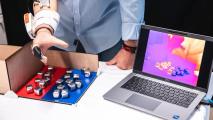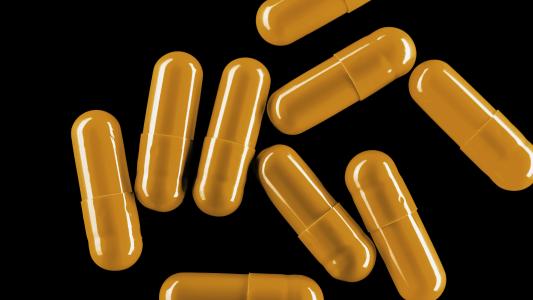2020 has been … rough.
With sickness and death topping this year’s headlines, who among us has not been thinking more about our bodies and their paradoxical delicacy and resilience?
For those of you in the biohacking community, however, this heightened awareness of the corporeal form is nothing new; you’ve already been seeking to quantify, qualify, and optimize your body.
While biohacking your own COVID vaccine may be the ultimate risk/reward holiday gift, I’ve put together a slightly safer list of ideas for you or the biohacker in your life.
And no, we don’t make any money off this list. I asked.
Bioengineering 101 Beginner Kit and Video Lectures — The ODIN
From the company founded by biohacking engineer, maverick, and at-home CRISPR kit enthusiast Josiah Zayner, the description on this one says “no experience necessary” right up at the top, which is exactly what I’m looking for if I’m a budding bioengineer.
With all the materials you need — from pipettes to petri dishes, glass bottles to glowing bacteria — it’s essentially a mind scientist starter kit which is, of course, awesome.
What puts this over the top for me, though, is that you won’t be thrown into the deep end of the gene pool to drown. Eight online lectures and experiments will help you learn the fundamentals at your leisure; University of Minnesota synthetic biologist Kate Adamala and Harvard geneticist George Church offer up some guest lectures, too, which means you’ll learn the science behind it as well.
Which is all a great segue to …
Give the Gift of Classes
Time to let your biohacker stretch their genetically modified wings! Brooklyn-based Genspace is a nonprofit that provides open access lab space, as well as classes.
Because SARS-CoV-2 has crashed the holidays, Genspace is currently focusing on online classes. Build a remote plant monitor, paint with bioluminescent bacteria, get a crash course on personalized medicine — something here is likely to pique a biohacker’s interest.
An important note on this one: if you can’t make it to BK to pick up the course materials, you’re gonna have to source them yourself.
Halo Sport 2
Shocking the brain can provoke some remarkable results. Scientists and doctors I’ve spoken with take a reverential, almost religious tone when talking about deep brain stimulation stopping Parkinson’s tremors before their very eyes.
But there’s another form of neurostimulation that doesn’t require invasive skull-drilling called transcranial direct current stimulation (tDCS) — and it might present a major breakthrough in athletic performance training.
The idea is that the electrical stimulation, directed to certain areas of the brain, heightens neuroplasticity, making learning more effective. With Halo Sport’s non-invasive, over-the-ear-headset, you can train your brain to absorb new information faster. Peer-reviewed research has shown that training with Halo improves performance up to 15% — although these studies are mostly limited to professional athletes, so it’s unclear what benefits it may have for former high school (and small time college!) athletes like you and me.
Oura Ring
Oura’s like other wearables in that it tracks biometric data straight from the source — you. It is unlike other wearables in that it seems to be pretty highly regarded, finding its way onto the enormous fingers of the NBA and teaming up with West Virginia University for a study looking to detect coronavirus symptoms.
The ring gathers various data points — including resting heart rate and heart rate variability, respiratory rate, body temperature, and sundry sleep measures — and gives you the results in a linked app. Then, like a Formula 1 engineer, you can use the telemetry of you to dial it all in.
xNT NFC Chip
No dip into biohacking would be complete without a chip! We must confess a personal connection to this model, hereby dubbed the Chase Chip after Freethink’s own Chase Pipkin, who — dedicated director that he is — got one implanted in a biohacker’s garage.
These bad boys have not been certified by any government regulatory agency for use inside the human body, but Chase has assured me via Slack that he has suffered no adverse effects thus far, merely a “weird lump in my hand when it gets cold” — granted, he could have typed all that with one hand.
Anyway, you can use one of these to help hasten any number of alternative futures in your day to day; unlock your house or car with a wave, like a really small-potatoes Dr. Strange, or transfer data to your phone — simply have someone scan your hand! It isn’t weirder and less useful than texting an address card at all.






